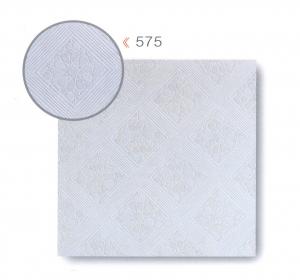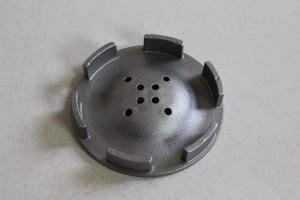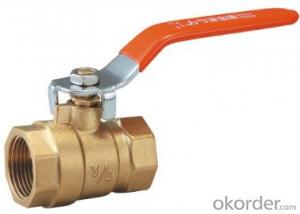Stainless Steel 303
Stainless Steel 303 Related Searches
Best Paint For Stainless Steel Blanket Insulation For Steel Buildings Primer For Galvanized Steel Foam Filter For Stainless Steel H S Code For Stainless Steel Surface Grinding Wheels For Stainless Steel Surface Grinding Wheels For Hardened Steel Hole Saw For Stainless Steel Paint For Stainless Steel Stainless Steel For BbqHot Searches
Steel Mesh Panels For Sale Price For Stainless Steel Scrap Scrap Price For Stainless Steel Price For Stainless Steel Stainless Steel Tank For Sale Stainless Steel Sheets For Sale Cheap High Tea Sets For Sale Stainless Steel Tanks For Sale Stainless Steel For Sale High Density Fiberboard For Sale Solar Hot Water Collectors For Sale Scaffolding For Sale In Uae Scaffolding For Sale In Ireland Scaffolding For Sale In Houston Type Of Inverter For Solar Price Of Shipping Containers For Sale Types Of Inverter For Solar Stock Price For Aluminum Used Solar Inverter For Sale Steel Mesh Panels For SaleStainless Steel 303 Supplier & Manufacturer from China
Okorder.com is a professional Stainless Steel 303 supplier & manufacturer, offers integrated one-stop services including real-time quoting and online cargo tracking. We are funded by CNBM Group, a Fortune 500 enterprise and the largest Stainless Steel 303 firm in China.Hot Products
FAQ
- 440C and 440F are both types of stainless steel that belong to the 440 series. However, they have slight differences in their composition and properties. 440C stainless steel is a high-carbon martensitic stainless steel that contains chromium, which enhances its corrosion resistance and hardness. It is known for its exceptional wear resistance, good strength, and ability to maintain sharpness. Due to its high carbon content, it offers excellent hardness, but it may be more difficult to machine compared to lower carbon stainless steels. 440C is commonly used in applications where high strength, corrosion resistance, and wear resistance are required, such as in cutting tools, bearings, and surgical instruments. On the other hand, 440F stainless steel is a free-machining version of 440C. It is also a high-carbon martensitic stainless steel but with added sulfur, which improves its machinability. The sulfur acts as a lubricant during the machining process, enabling easier and faster cutting. However, the addition of sulfur slightly reduces its corrosion resistance and toughness compared to 440C. 440F is often used in applications that require extensive machining, such as in automotive components, fasteners, and valve parts. In summary, the main difference between 440C and 440F stainless steel pipes lies in their machinability and sulfur content. 440C offers higher corrosion resistance and hardness but may be more difficult to machine, while 440F is easier to machine but has slightly reduced corrosion resistance and toughness. The choice between the two depends on the specific requirements of the application, with 440C being preferred for applications that prioritize corrosion resistance and wear resistance, and 440F being used when extensive machining is required.
- Yes, stainless steel pipes are suitable for pharmaceutical factories. Stainless steel is known for its corrosion resistance, durability, and hygienic properties, making it a preferred material for pharmaceutical applications. It is easy to clean, maintains product purity, and can withstand high-pressure and high-temperature conditions often found in pharmaceutical processes. Additionally, stainless steel pipes comply with industry regulations and standards, ensuring the safety and quality of pharmaceutical products.
- The main difference between 304LN and 316LN stainless steel pipes lies in their composition and the addition of certain elements. 304LN stainless steel is an austenitic stainless steel that contains low carbon content and nitrogen. It is designed to provide improved strength and corrosion resistance compared to standard 304 stainless steel. The addition of nitrogen promotes the formation of a stable austenite phase, which enhances the material's mechanical properties. On the other hand, 316LN stainless steel is also an austenitic stainless steel but contains molybdenum and a higher nickel content compared to 304LN. The addition of molybdenum increases the material's resistance to pitting corrosion caused by chlorides and other aggressive environments. The higher nickel content further enhances the corrosion resistance and makes it suitable for more demanding applications, such as marine environments or chemical processing. In summary, while both 304LN and 316LN stainless steel pipes are austenitic and offer good corrosion resistance, the addition of molybdenum and higher nickel content in 316LN makes it more suitable for applications where enhanced corrosion resistance is required, especially in aggressive environments.
- Yes, stainless steel pipes can be inspected for defects. Various non-destructive testing methods such as visual inspection, ultrasonic testing, radiography, and magnetic particle inspection can be used to identify and evaluate any potential defects in the pipes. These inspections help ensure the integrity and quality of stainless steel pipes for various applications.
- 304Ti and 316Ti are both types of stainless steel pipes, but they have some key differences. The main difference between 304Ti and 316Ti stainless steel pipes lies in their chemical composition. 304Ti is a variant of the 304 stainless steel grade, while 316Ti is a variant of the 316 stainless steel grade. One of the major distinctions is the presence of molybdenum in 316Ti, which is absent in 304Ti. Molybdenum enhances the corrosion resistance of stainless steel, making 316Ti more resistant to pitting and crevice corrosion in chloride-containing environments, such as marine or coastal areas. This makes 316Ti a preferred choice for applications where exposure to corrosive elements is a concern. Additionally, the carbon content in 316Ti is lower than that in 304Ti, which improves its resistance to sensitization and intergranular corrosion. Sensitization occurs when stainless steel is exposed to high temperatures, leading to the formation of chromium carbides, which can reduce the corrosion resistance of the material. By reducing the carbon content, 316Ti minimizes the risk of sensitization and maintains its corrosion resistance even under high-temperature conditions. In terms of mechanical properties, 316Ti generally has higher tensile strength and yield strength compared to 304Ti, making it more suitable for applications that require higher strength and durability. However, it is important to note that both grades of stainless steel pipes have excellent strength and toughness. In summary, the main differences between 304Ti and 316Ti stainless steel pipes lie in their chemical compositions and resulting corrosion resistance. 316Ti offers superior corrosion resistance in chloride-containing environments and better resistance to sensitization and intergranular corrosion. However, the choice between the two grades ultimately depends on the specific application requirements and environmental factors.
- Yes, stainless steel pipes are highly suitable for automotive exhaust systems. They offer excellent corrosion resistance, durability, and heat resistance, making them ideal for withstanding high temperatures and harsh conditions that exhaust systems endure. Additionally, stainless steel pipes provide better performance, improved fuel efficiency, and can enhance the overall aesthetic of the vehicle.
- Stainless steel pipe is mainly used in what areas?
- According to the use of stainless steel pipe can be divided into oil well pipe (casing, tubing and drill pipe etc.), line pipe, boiler tube, mechanical structure, hydraulic prop pipe pipe, cylinder pipe, geological pipe, chemical pipe (high pressure fertilizer pipe, oil cracking tube) and shipbuilding pipe etc..
- Yes, stainless steel pipes can be threaded with NPT (National Pipe Thread) threads. NPT is a widely used standard for pipe threads in the United States, and it is suitable for both stainless steel and other materials. However, it is important to note that stainless steel has a higher strength and hardness compared to other materials, which may require more care and attention during the threading process. Additionally, it is recommended to use lubricants or cutting fluids specifically designed for stainless steel to ensure a smooth and accurate threading operation.















































